A few years ago, Dr. Nicholas Kemp left the Gold Coast and headed upwards to Brisbane where he founded The Leg Vein Doctor. As the name suggests, the clinic specializes in the treatment of leg vein problems such as varicose and spider veins. Dr. Kemp was quick to identify how the developments in technology and modern medicine have been able to be combined to provide non-surgical treatments to his patients within an ‘office based’ environment rather than a hospital.
“It’s an interesting area of medicine because each patient is very different in what they are trying to achieve and why they are coming to us. We also, surprisingly, see a large number of younger patients and of course older patients, predominantly women but a large number of men as well. We draw patients from all walks and stages of their life” says Rhiannon Kemp, the clinic’s General Manager.
Since commencing his training through the University of Sydney and the Australasian College of Phlebology in 2009, Dr. Kemp has held an active role in the education of doctors who are interested in this specialized field as well as the general public who wish to learn more about the condition. Anyone who wants to learn more about his work can find a wealth of information readily available on the clinic’s website or through a simple phone call at the clinic.
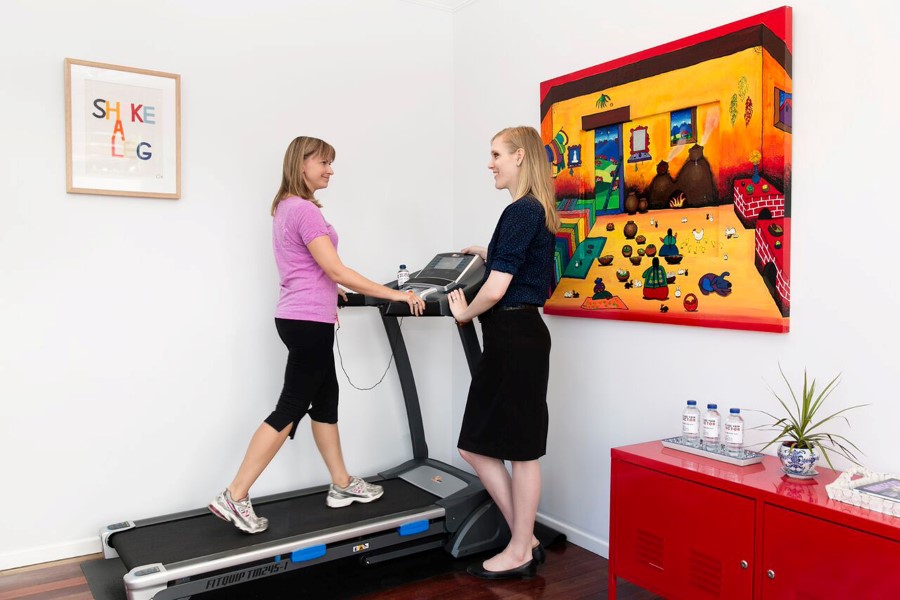
Technological advancements in Phlebology
Dr. Kemp, who still heads up the clinic, has a particular interest in the field of Phlebology. As his wife Rhiannon tells it, the doctor became interested in the more advanced treatments when he had a recurrence in his own varicose veins following conventional surgery. After delving deeper into this niche area of medicine, Dr. Kemp’s passion for the subject continued to grow and he decided to retrain so that he could offer it to his own patients. Developments in ultrasound have also kept practitioners on their toes as they need to constantly stay updated with what is available, such as 3D imaging.
Technological advances in all fields of medicine are important but in the field of Phlebology it is critical for practitioners to remain abreast of all the rapid developments in ultrasound and laser technologies to maintain the standards of best practice. Keeping up to date with the latest journals and attending international conferences is essential. The treatment of varicose and spider veins will continue to evolve. Technological innovation and new insights through research over the last two decades have completely changed the paradigm of treatment for patients with varicose veins.
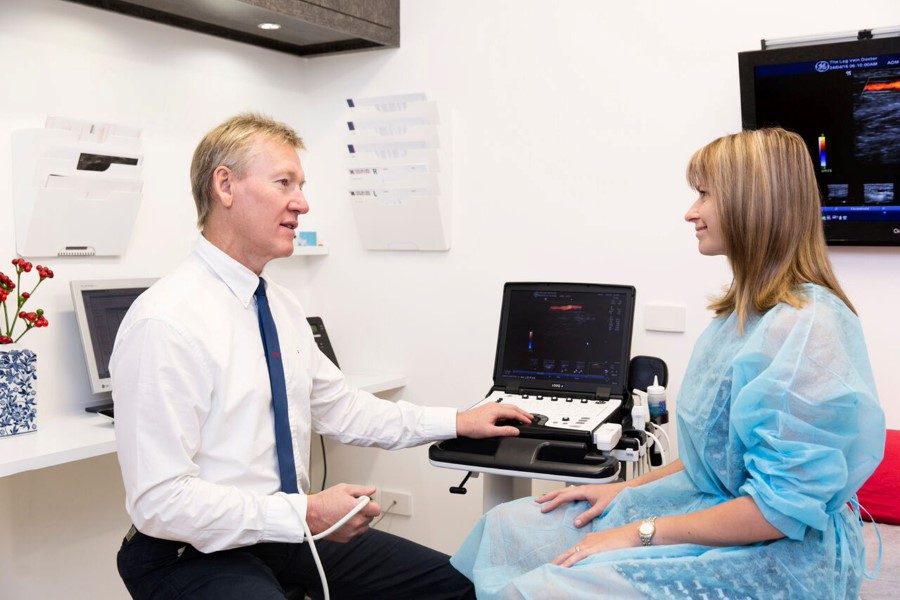
“Predominantly, the field of Phlebology initially developed in Europe and then the USA but Australia has long been recognized as having international experts. The UK NICE guidelines recommend that varicose vein treatments should be endovenous laser or radio-frequency based procedures first, then ultrasound guided sclerotherapy and then failing that you look at the surgical options. These international guidelines have really changed the direction of this field of medicine. Taking people out of hospitals, out of operates theatres which leave patients sore, bandaged up, in a bed, to the new alternative of something where you can walk in and walk out of returning back to work or in time to collect the children from school.”
These guidelines and evolvements are thoroughly explained to every patient attending for consultations at The Leg Vein Doctor. After all, patients have to understand that there is a wide range of treatment options available. For instance, varicose veins can be treated both through Endovenous Laser Ablation (ELA) and Ultrasound Guided Sclerotherapy (UGS). With ELA, a small fibre is passed up inside the varicose vein through a small puncture at the level of the knee. The vein is permanently sealed by the heat from the laser fibre during slow withdrawal down the length of the vein. The procedure can usually be done in less than an hour and pain is minimal.
Spider and varicose veins
Though spider veins are usually a cosmetic issue, varicose veins constitute a medical problem that “was recorded in Roman times”, according to Rhiannon. Conventional surgery was the traditional method of treating varicose veins for more than a hundred years but it has long been recognized that varicose veins returning after surgery have been an enormous problem. Surgery has also been associated with other risks due to hospitalization and the requirement for a general anaesthetic.
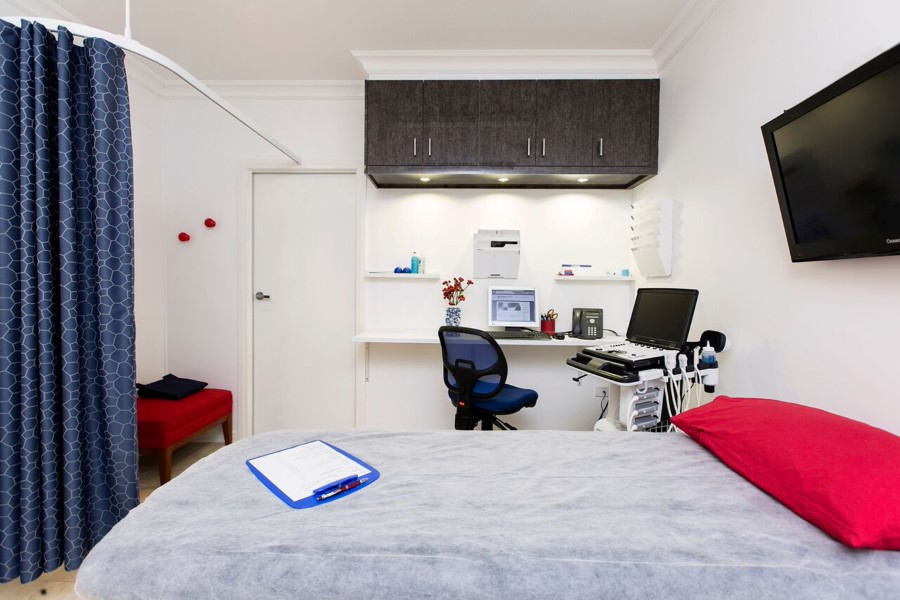
“The reason why the recurrence is so high with surgical stripping (40% within 4 years) is not because the surgery has been done improperly but because of regrowth of new varicose veins – a process now recognized as “Neovascularization”. Amazingly, the body just seems to start regrowing new veins in the groin area which then over the years extend down the leg to sometimes cause even more severe varicose veins. In the last 10-15 years with the use of ELT the treated veins are simply reabsorbed and do not seem to reoccur to the same high degree as seen in conventional surgery”, says Rhiannon.
Doctor-patient communication at the next level
Communicating and interacting with patients on a personal level is of utmost importance to the staff at The Leg Vein Doctor and Dr. Kemp plays an important role in that. As the staff will gladly tell you, there are a lot of patients who live outside the metropolitan area and often need to make extended trips in order to visit the clinic. However, Dr. Kemp and his team are very experienced in dealing with this and have even created a specific program for patients who live in rural regions but wish to receive treatment for their venous concerns.
Dr. Kemp, as a foundation Fellow of the Australian College of Rural and Remote Medicine (FACRRM), ensures that The Leg Vein Doctor is able to offer their services to as wide a range of patients as possible. For several years Dr. Kemp has maintained a monthly clinic in the rural community of Toowoomba where he continues to provide a more accessible service to those living in regional country towns. The essential tools of the trade have now become portable – such as ultrasound and laser machines – so that these can be brought onsite for patient assessment and treatment.
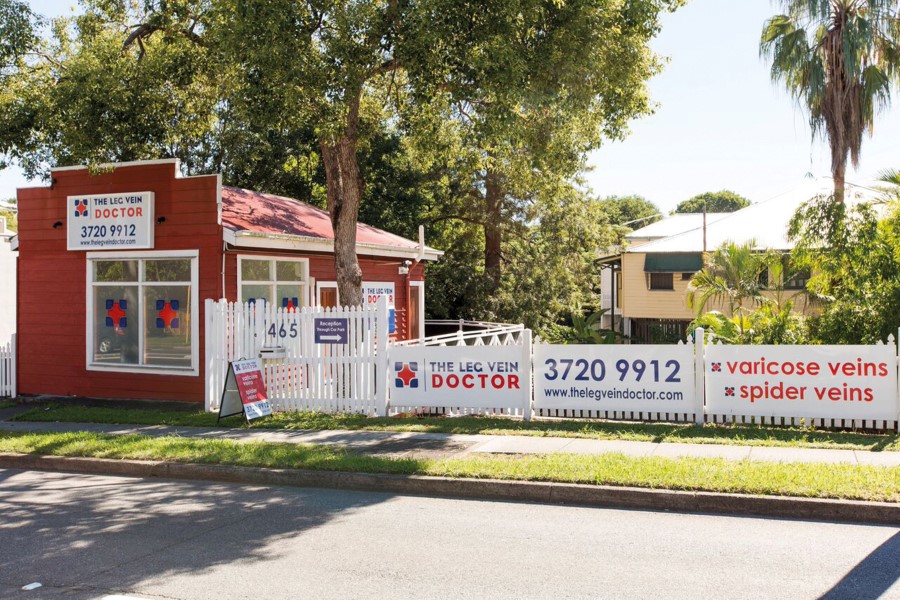
“We are a small team. My husband heads up the practice. He does everything really, from start to finish with the patients, and that’s kind of the model that we wanted. His background is in rural general practice. He has been a family GP for 15 years in a remote setting which meant that he had to do quite a lot of surgical procedures, anesthetics and obstetrics. He is very competent in terms of communicating with patients and explaining to them about treatment options and providing ‘hands on’ care”, comments Rhiannon.
This patient-first approach is evident throughout the clinic’s work. The process starts at the receptionists who offer information to new patients and answer as many questions as they can. The clinic offers after hours appointments which are very popular as it means patients do not need to take time off work to complete treatment. Patients are then booked in for an initial consultation and ultrasound investigation. Dr. Kemp examines the patients and looks at each case individually. After informing the patients of the exact details of their condition and providing them with a written treatment plan, patients can elect to book in for procedures. Finally, because of the nature of leg vein issues and the incidence of recurrence, the staff interacts with patients for a year post treatment to ensure the treatment has been a success. Many patients come back to have their second leg treated and so complete the process again. The clinic has had patients bring their husbands in for treatment because they have been happy with their own results and they have also had a few mother and daughter patient duos as well.
Recognition for excellent work
Thankfully, the work of The Leg Vein Doctor has not gone unnoticed. Aside from the fact that patients have offered overwhelmingly positive feedback, the staff’s active role in the community has created a ripple effect. Patients with leg vein issues are now more informed about their conditions and they have a better understanding of the various treatment options available to them. GPs and other allied health practitioners in the city who are interested in vein disorders involving the leg now have a dedicated, experienced team ready to answer any questions and direct them to appropriate resources.
“The critical thing for us is education. It’s something that we are very passionate about. If patients are aware of the options then they can make an informed choice about their treatment”, says Rhiannon, and it’s very easy to see the very real effects of that philosophy. Though the field of phlebology is still small and only a handful of doctors are trained every year, there’s considerable work on the horizon. And despite the fact that The Leg Vein Doctor has no plans for further expansion at the moment, its work ethics and dedication to patient services will hopefully influence the next generation as well.
AT A GLANCE
WHO: The Leg Vein Doctor
WHAT: Offering non-surgical treatment for various veins and spider veins in Brisbane and Toowoomba.
WHERE: 465 Milton Road, Auchenflower QLD 4066
WEBSITE: www.thelegveindoctor.com


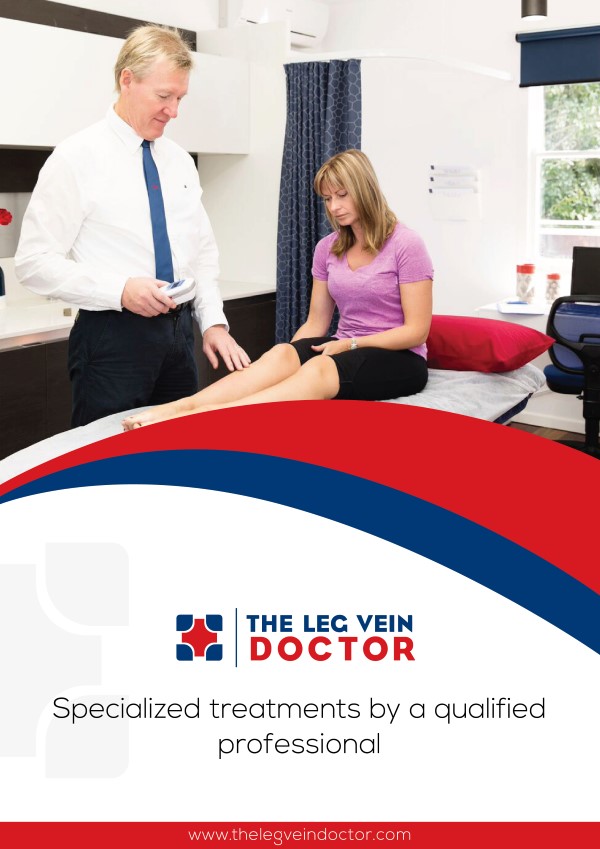
 This information will never be shared to third parties
This information will never be shared to third parties